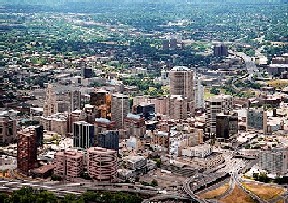Landscape Stewardship

How Does the Regulation of Land Use and Development Affect You?
The land use regulations adopted by your city or town control the size, location and use of buildings, structures, and open land. For instance, they may dictate: where and how a new large commercial development can be sited; whether new condominiums can be built near the train station or on the farm down the road; how close a swimming pool can be installed to an inland wetland; whether an in-law apartment can be added over a residential garage; how close to a lot-line a fence can be placed; and what minimum lot sizes and road widths are required for new subdivisions. These requirements are generally found in your municipal zoning, subdivision and inland wetlands regulations.
If you want to change the use of an existing building, or construct or alter a building or structure on private land, you should consult with the local land use office to determine whether or not your project requires a permit, and if so, what the process is to obtain the required authorizations. A typical first step in the process is to determine whether your proposal is allowed under the existing zoning designation for your site. To do so, the land use staff will likely consult the local zoning map to identify which zoning designation applies to your site and the regulations applicable to that zone. Please note that experienced staff may not need to consult the map or regulations, as they may be sufficiently familiar with both to identify whether or not your proposal is allowed. Don’t hesitate to ask them to show you both the map and regulations if you have any questions.
There are many types of land use projects, and the administrative process differs for each. Some of the more common ones related to planning and zoning include: activities "exempt" from regulation; "as of right" uses which are allowed as a right of owning property within a given zone; site plan review; subdivision approval; and special permit or special exception review. Each of these situations has different administrative requirements. There are also several other categories of approval, including: location certification for motor vehicle repairer or dealer; request to vary the regulations; and application to change the regulations or the zoning map. Proposed buildings or uses may also require approval from other commissions (e.g., the inland wetlands, historic, or harbor management commissions) or from other municipal departments (building, engineering, traffic, police or fire). Many projects will require a formal application to one or more of the local boards or commissions. Their consideration may take place at a public meeting where the applicant presents his/her project to the commission or at a public hearing where not only the applicant presents his/her project to the commission, but interested parties and the public are allowed an opportunity to comment for the record.
Most individual single-family residential buildings do not require permits or other approvals from the DEEP. However commercial, industrial and multi-family projects could require DEP permits depending upon the specifics of the project. For additional information, see DEEP Regulatory Programs Impacting Land Use. Also, any activity waterward of the high tide line in tidal, coastal or navigable waters, or in tidal wetlands does require prior DEEP authorization through the coastal permitting programs.
What can you do to support your local land use decision makers? Learn what is going on by: reading the legal notices in your local paper; visiting City/Town Hall; or checking the municipal web site on a regular basis. Volunteer for a seat on a local land use board or commission. If your boards and commissions are elected rather than appointed, be sure to exercise your right and vote for local land use board and commission candidates on Election Day.
Content last updated March 2009

